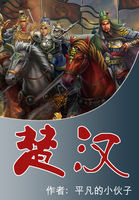Among other great minds affected by the influence of Saint-Simonism, it is scarcely surprising to find Lamennais. When George Sand first knew him, he was fifty-three years of age. He had broken with Rome, and was the apocalyptic author of _Paroles d'un croyant_. He put into his revolutionary faith all the fervour of his loving soul, a soul that had been created for apostleship, and to which the qualification of "a disaffected cathedral" certainly applied.
After the famous trial, Liszt took him to call on George Sand in her attic. This was in 1835. She gives us the following portrait of him: "Monsieur de Lamennais is short, thin, and looks ill.
He seems to have only the feeblest breath of life in his body, but how his face beams. His nose is too prominent for his small figure and for his narrow face. If it were not for this nose out of all proportion, he would be handsome. He was very easily entertained.
A mere nothing made him laugh, and how heartily he laughed."[32]
It was the gaiety of the seminarist, for Monsieur Feli always remained the _Abbe_ de Lamennais. George Sand had a passionate admiration for him. She took his side against any one who attacked him in her third _Lettre d'un voyageur_, in her _Lettre a Lerminier_, and in her article on _Amshaspands et Darvands_.
This is the title of a book by Lamennais. The extraordinary names refer to the spirits of good and evil in the mythology of Zoroaster.
George Sand proposed to pronounce them _Chenapans et Pedants_.
Although she had a horror of journalism, she agreed to write in Lamennais' paper, _Le Monde._[32] _Histoire de ma vie._
"He is so good and I like him so much," she writes, "that I would give him as much of my blood and of my ink as he wants."[33] She did not have to give him any of her blood, and he did not accept much of her ink. She commenced publishing her celebrated _Lettres a Marcie_ in _Le Monde_. We have already spoken of these letters, in order to show how George Sand gradually attenuated the harshness of her early feminism.
[33] _Correspondance_: To Jules Janin, February 15, 1837.
These letters alarmed Lamennais, nevertheless, and she was obliged to discontinue them. Feminism was the germ of their disagreement.
Lamennais said: "She does not forgive St. Paul for having said:
`Wives, obey your husbands.'" She continued to acknowledge him as "one of our saints," but "the father of our new Church"gradually broke away from her and her friends, and expressed his opinion about her with a severity and harshness which are worthy of note.
Lamennais' letters to Baron de Vitrolles contain many allusions to George Sand, and they are most uncomplimentary.
"I hear no more about Carlotta" (Madame Marliani), he writes, "nor about George Sand and Madame d'Agoult. I know there has been a great deal of quarrelling among them. They are as fond of each other as Lesage's two _diables_, one of whom said:
`That reconciled us, we kissed each other, and ever since then we have been mortal enemies.'" He also tells that there is a report that in her novel, entitled _Horace_, she has given as unflattering a portrait as possible of her dear, sweet, excellent friend, Madame d'Agoult, the _Arabella_ of the _Lettres d'un voyageur_.
"The portraits continue," he writes, "all true to life, without being like each other." In the same book, _Horace_, there is a portrait of Mallefille, who was beloved "during one quarter of the moon,"and abhorred afterwards. He concludes the letter with the following words: "Ah, how fortunate I am to be forgotten by those people!
I am not afraid of their indifference, but I should be afraid of their attentions. . . . Say what you like, my dear friend, those people do not tempt me at all. Futility and spitefulness dissolved in a great deal of _ennui_, is a bad kind of medicine."He then goes on to make fun, in terms that it is difficult to quote, of the silly enthusiasm of a woman like Marliani, and even of George Sand, for the theories of Pierre Leroux, of which they did not understand the first letter, but which had taken their fancy.
George Sand may have looked upon Lamennais as a master, but it is very evident that she was not his favoured disciple.
It was due to his teaching that George Sand obtained her definite ideas about Catholicism, or rather against it. She was decidedly its adversary, because she held that the Church had stifled the spirit of liberty, that it had thrown a veil over the words of Christ, and that it was the obstacle in the way of holy equality.
What she owed specially, though, to Lamennais was another lesson, of quite another character. Lamennais was the man of the nineteenth century who waged the finest battle against individualism, against "the scandal of the adoration of man by man."[34]
[34] Compare Brunetiere, _Evolution de la poesie lyrique_, vol. i. p. 310.
Under his influence, George Sand began to attach less importance to the personal point of view, she ceased applying everything to herself, and she discovered the importance of the life of others.
If we study this attentively, we shall see that a new phase now commenced in the history of her ideas. Lamennais was the origin of this transformation, although it is personified in another man, and that other man, was named Pierre Leroux.
What a strange mystery it is, among so many other mysteries, that of one mind taking possession of another mind. We have come into contact with great minds which have made no impression on us, whilst other minds, of secondary intelligence, perhaps, and it may be inferior to our own, have governed us.
By the side of a Lamennais, this Pierre Leroux was a very puny personage. He had been a compositor in a printing works, before founding the _Globe_. This paper, in his hands, was to become an organ of Saint-Simonism. He belonged neither to the _bourgeois_ nor to the working-class. He was Clumsy, not well built, and had an enormous shock of hair, which was the joy of caricaturists. He was shy and awkward, in addition to all this.














